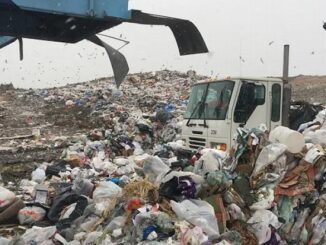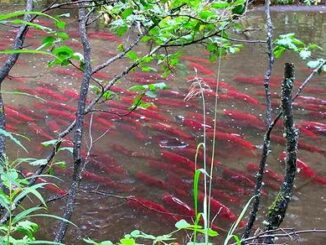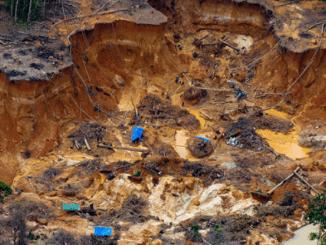
LYON, France, November 5, 2025 (ENS) – In a blow to criminal organizations along South America’s Madeira River, law enforcement personnel have disabled 277 dredges used in illegal gold extraction worth an estimated US$6.8 million.
When factoring in equipment losses, gold extraction, environmental and social damages, as well as disrupted profits, the total economic impact on criminal mining organizations is estimated at US$193 million.
The damage from illegal gold dredging is environmental as well as financial.

Mercury, a chemical used to extract gold from sediment, causes neurological damage. Yet it is dumped into the rivers and accumulates up the food chain, with larger fish and those that eat them, including humans, exposed to this toxic chemical. Indigenous people and others living in river communities who fish for their main source of protein are at greatest risk.
The international police agency Interpol supported the first operation against illegal gold mining in the Amazon Basin that was coordinated by Brazil’s Amazon International Police Cooperation Centre, known as the CCPI Amazônia.
“This operation marks a new chapter in our collective effort to protect the Amazon, and is a clear signal that international cooperation via CCPI Amazônia is not just a concept, it is concrete action,” Interpol Secretary General Valdecy Urquiza said.
“United, we can confront the criminal networks that threaten communities and our environment, and Interpol remains a steadfast partner in this fight,” Urquiza said.
The Madeira River in South America plays a crucial role in the hydrology of the Amazon Basin. As the largest tributary of the Amazon River, it is a vital part of the region’s ecosystem, supporting many unique plants and animals.
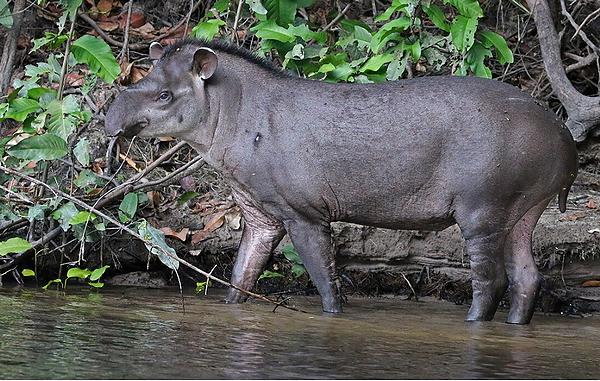
The Madeira River system originates in the Andes Mountains of Peru and travels through Ecuador, Colombia, Venezuela, Bolivia, and Brazil before emptying into the Atlantic Ocean.
The Madeira River basin is inhabited by unique wildlife, such as the jaguar, giant otter, pink river dolphin, and Brazilian tapir. Bird species include the harpy eagle and a rainbow of macaws.
Estimates count more than 900 fish species in the Madeira River Basin, making it one of the freshwater systems in the world with the highest species richness. The fish swim along with reptiles such as the black caiman and anacondas.
The CCPI Amazônia operation provided authorities with valuable intelligence to identify and dismantle the financial and logistical networks behind illegal mining.
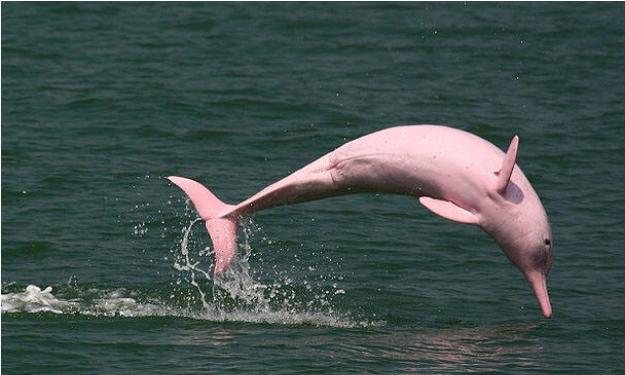
Participating countries, through liaison officers based at the CCPI included: Bolivia, Brazil, Colombia, Guyana, Peru, and Suriname
Led by the Brazilian Federal Police, the operation brought together more than 100 officers across operational, tactical and analytical roles, working in close collaboration with national and international authorities.
Participating Brazilian agencies included: the Federal Police , the Federal Highway Police, the Brazilian Ministry of Labor and Employment, the National Public Security Force, the Public Labor Prosecution Service, and the Military Police of Amazonas.
Using intelligence and satellite data, authorities mapped over 400 square kilometers (154 square miles) of river and forest territory heavily impacted by illegal mining.
Interpol supported the operation with real-time database checks and analysis while facilitating information sharing and communication to strengthen trust and collaboration.
An Interpol Purple Notice, warning of the detection of a new method of operation to facilitate transnational gold-smuggling, was published as a direct result of field activities.
“This operation, the first coordinated by the CCPI Amazônia, demonstrates the Centre’s capacity to aggregate the efforts of various institutions responsible for combating crime in the Pan-Amazon region,” Director of Amazon and Environment Protection of the Brazilian Federal Police Humberto Freire de Barros said.
“This coordinated work aims not only to disrupt criminal activities but also to enhance investigations and ensure that those involved in the illegal chain are brought to justice,” he said.
During the operation, samples of sand, fabric, and other materials used in gold extraction were collected and submitted for forensic analysis to identify their composition, detect hazardous substances such as mercury and cyanide, and trace their origin.
A forensic expert also obtained biological samples from residents to evaluate mercury exposure and assess the potential impact of illegal mining on their health.
Interpol continues to support follow-up investigations and any additional joint actions.
The support from Interpol to Operation Boiuna was provided through Project LEAP, funded by Norway’s International Climate and Forest Initiative (NICFI).
Additional support was provided by Project GAIA, through Germany’s Federal Ministry for the Environment, Climate Action, Nature Conservation and Nuclear Safety.
Not Their First Crackdown
A joint operation in May 2023 along remote rivers in the Brazilian state of Amazonas, near the border with Colombia, resulted in the burning of at least 29 dredges. Videos circulating in miners’ WhatsApp groups showed equipment in flames. One source said explosives were used to disable the barges.
The 2023 police and armed forces crackdown was reported by the Pulitzer Center in an article by authors Bram Ebus, a rainforest investigations fellow, and Rodrigo Pedroso, an Amazon Pulitzer Center rainforest reporting grantee.
The 2023 crackdown, called Operation Agata-Uiara Joint Command, involved the armed forces, the federal environmental agency IBAMA, the Indigenous affairs agency FUNAI, and other government agencies.
It targeted the Juami and Puruê rivers – tributaries that flow directly into the Madeira River as part of the same river system.
A team of reporters from Amazon Underworld, an alliance of InfoAmazonia, the Liga Contra el Silencio from Colombia, and Armando.Info from Venezuela, that was in the area in February 2023 counted more than 80 dredges along a 226-kilometer (140-mile) stretch of the 394-kilometer (245-mile) Puruê River, between the Japurá River and the community of Purezinho, a tiny mining settlement.
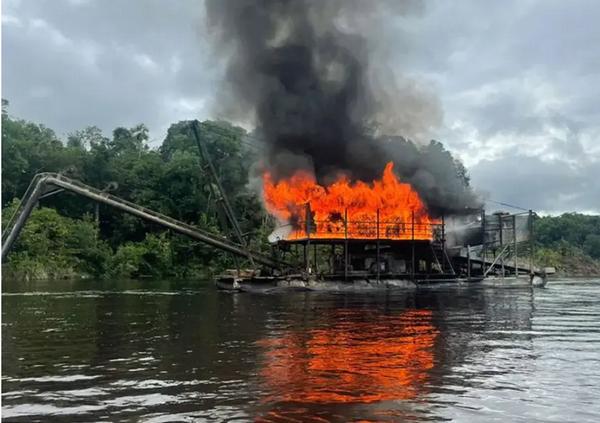
Despite this huge multi-agency crackdown, many illegal miners burned or concealed their dredges and left the river before security forces arrived, after rumors circulated about a possible government raid in the area. But many illegal miners said they would return after the government authorities left. They did.
Because of the strong presence of illegal mining, the Japurá region is considered one of the most dangerous and violent in Amazonia, even by the local police.
The Brazilian environmental agency IBAMA estimates that dredges can cost anywhere from about US$150,000 to around US$1.4 million to build. The agency estimates that the 29 dredges that were destroyed could have produced as much as US$4.6 million in illegal gold a month.
The dredges’ impact on the river is so violent that satellite images show how, in a few days, the interruption of mining and the miners’ departure ahead of the police action caused a rapid change in the color of the water from dark to light.
“This kind of mining takes a heavy toll on the environment, filling rivers with silt, changing their course, and destroying or radically changing the habitat of aquatic creatures,” Ebus and Pedroso write.
According to the Brazilian Navy, the 2023 crackdown resulted in the seizure of weapons and ammunition as well as at least 7.3 kilos of mercury, the highly toxic substance used to extract gold.
Featured image: Operation Boiuna was first operation coordinated by the CCPI Amazônia in Brazil. Authorities mapped over 400 square kilometers of river and forest territory impacted by illegal mining. 2025 (Photo courtesy Brazilian Federal Police)
© 2025, Environment News Service. All rights reserved. Content may be quoted only with proper attribution and a direct link to the original article. Full reproduction is prohibited.

